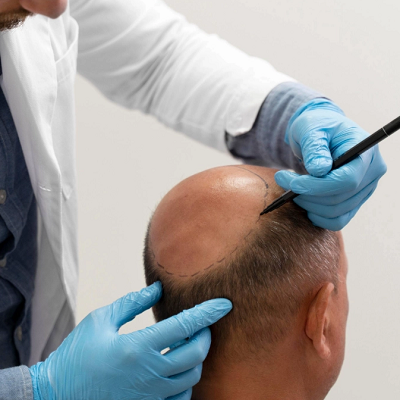Introduction
In recent years, hair transplant procedures have undergone a dramatic transformation, driven largely by advancements in technology. What was once considered a procedure fraught with limitations and imperfections has now become a sophisticated science, delivering natural-looking results with unprecedented precision. This article delves into how technological innovations have revolutionized modern hair transplant procedures at Hair Transplant Clinic in Muscat, enhancing outcomes and improving patient experiences.
The Evolution of Hair Transplant Technology
Traditional Techniques
Before the advent of modern technology, hair transplant procedures primarily relied on techniques such as the Punch Graft and Strip Harvesting methods. These methods, though effective, often left noticeable scars and had limited aesthetic results. The Punch Graft technique involved removing small plugs of hair follicles, while Strip Harvesting required excising a strip of the scalp, leading to a linear scar.
Introduction of Follicular Unit Transplantation (FUT)
The introduction of Follicular Unit Transplantation (FUT) marked a significant advancement. FUT involved harvesting a strip of scalp from the donor area, which was then dissected into individual follicular units before being transplanted. This method improved the density and naturalness of hair transplants but still carried risks of scarring and longer recovery times.
Advancement to Follicular Unit Extraction (FUE)
The breakthrough came with Follicular Unit Extraction (FUE), which offered a minimally invasive alternative. FUE involves extracting individual hair follicles directly from the scalp using a specialized micro-punch device, eliminating the need for a large incision and reducing scarring. This technique allows for quicker recovery and more natural results.
Cutting-Edge Technology in Hair Transplant Procedures
Robotic Hair Transplant Systems
One of the most revolutionary technologies in recent years is robotic hair transplant systems. Robots like ARTAS and NeoGraft have transformed the FUE procedure by automating the extraction and implantation of hair follicles. These systems utilize advanced imaging and algorithms to ensure precise follicle placement, improving the overall accuracy and consistency of the transplant.
3D Imaging and Planning
Modern hair transplant clinics are increasingly using 3D imaging technology to create detailed maps of the scalp. This allows for precise planning and customization of hairline design, ensuring that the transplanted hair aligns seamlessly with the natural growth pattern. 3D imaging also helps in predicting the final outcome, allowing patients to visualize their results before the procedure begins.
Platelet-Rich Plasma (PRP) Therapy
Platelet-Rich Plasma (PRP) therapy has become a complementary technology in hair restoration. PRP involves extracting a sample of the patient’s blood, processing it to concentrate the platelets, and then injecting it into the scalp. The growth factors in PRP stimulate hair follicles and promote healing, enhancing the overall effectiveness of hair transplant procedures.
Artificial Intelligence (AI) and Machine Learning
Artificial Intelligence (AI) and machine learning are making their way into hair transplantation, aiding in the analysis and selection of donor follicles. AI systems can evaluate follicle quality and predict which follicles are most likely to thrive in the recipient area, optimizing the success rate of the procedure.
Benefits of Technological Advancements
Enhanced Precision and Accuracy
The incorporation of advanced technologies like robotic systems and 3D imaging has significantly improved the precision of hair transplant procedures. This ensures that each follicle is placed with accuracy, resulting in a more natural appearance and a higher density of hair growth.
Minimized Scarring and Discomfort
Technological innovations have minimized the invasiveness of hair transplants. Techniques like FUE and robotic systems reduce the risk of scarring and shorten recovery times, making the procedure less disruptive to the patient’s daily life.
Predictable Outcomes
With the help of 3D imaging and AI, patients can now have a clearer understanding of their expected results before undergoing surgery. This predictability reduces uncertainty and helps in setting realistic expectations.
Conclusion
The role of technology in modern hair transplant procedures cannot be overstated. From the evolution of techniques like FUT and FUE to the integration of robotic systems, 3D imaging, PRP therapy, and AI, technological advancements have transformed hair restoration into a highly precise and patient-friendly procedure. These innovations not only enhance the effectiveness and naturalness of the results but also improve the overall patient experience. As technology continues to advance, the future of hair transplantation promises even more exciting developments, ensuring that individuals seeking to restore their hair can achieve optimal results with minimal disruption to their lives.





Comments